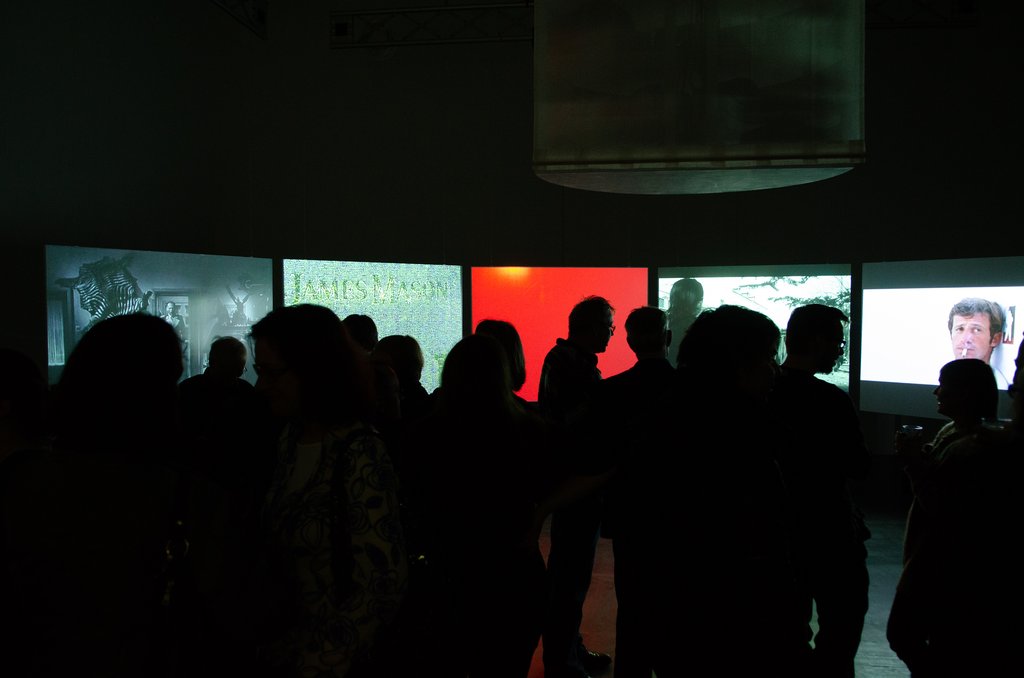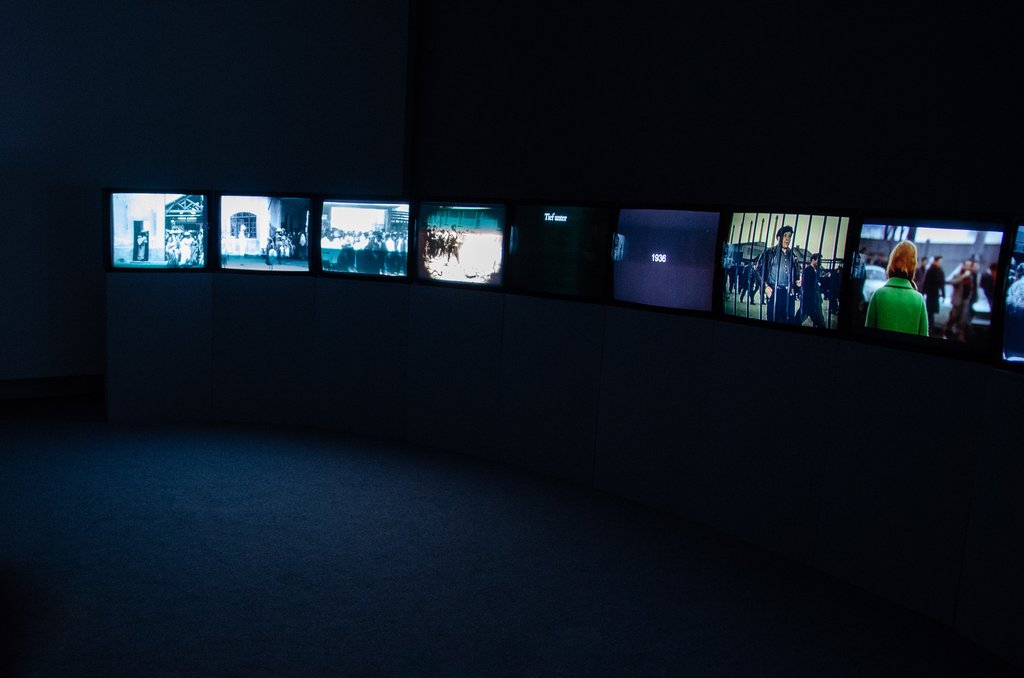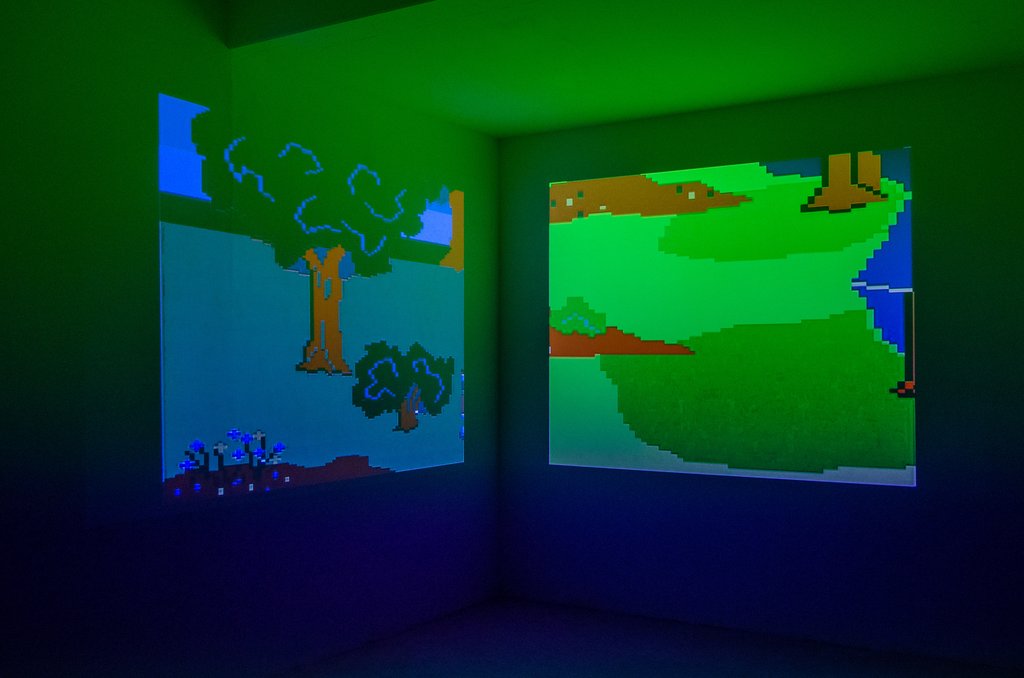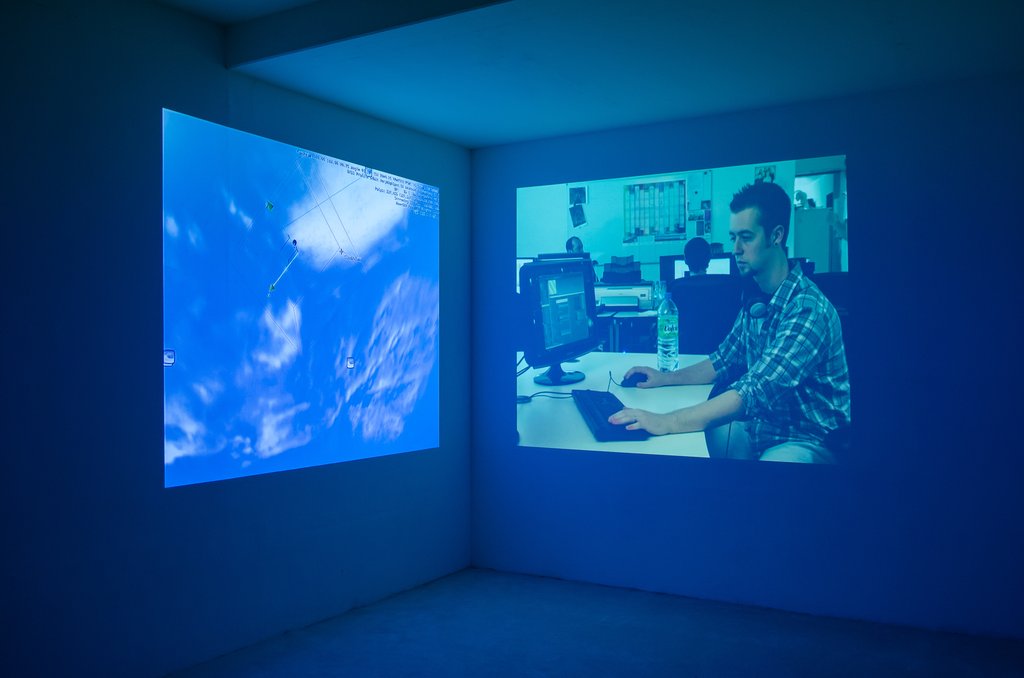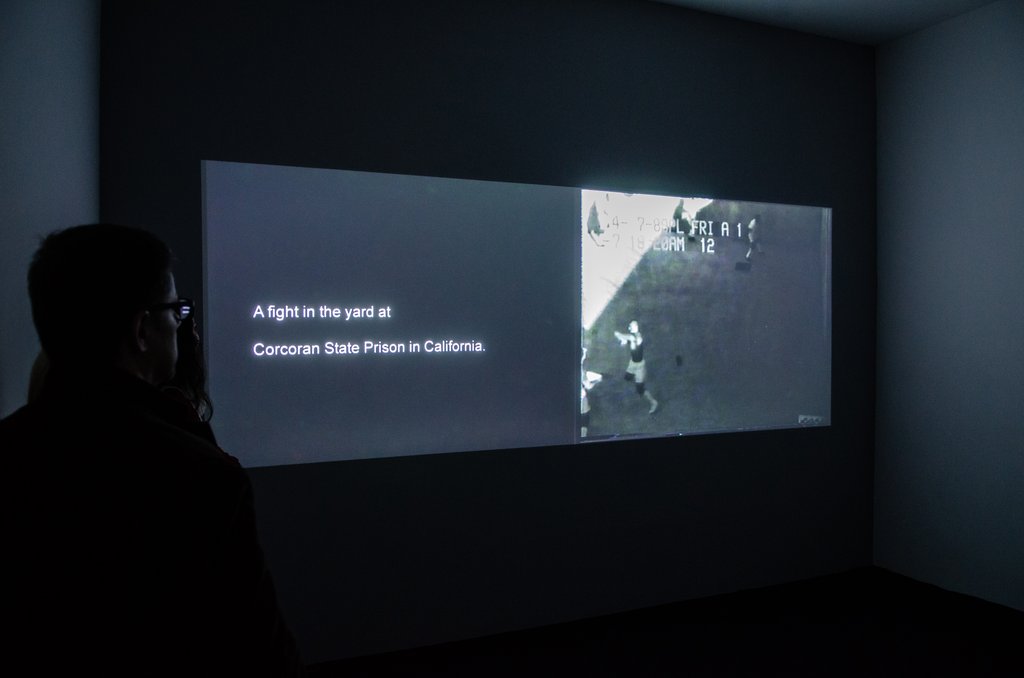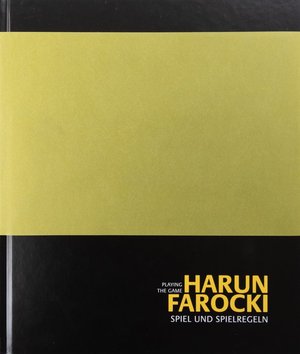Playing the Game
The first extensive solo exhibition of the artist Harun Farocki being presented by the Edith-Russ-Haus for Media Art offers the unique opportunity to view large-scale video installations such as the twelve-channel Workers Leaving the Factory in Eleven Decades (2006) or the six-channel Feasting or Flying (2008) and War Tropes (2011). Further important installations—On Construction of Griffith’s Films (2006), I Thought I Was Seeing Convicts (2000), his most recent work Parallels (2012), as well as the two famous films The Expression of Hands (1997) and How to Live in the FRG (1990)—provide broad insight into his creative work and strike a retrospective arc from 1990 to the present on the theme of playing and the rules of the game. It becomes clear how Farocki—who is as well known worldwide for his work as a filmmaker as for his media art—inimitably and repeatedly plays with the categories of documentation, fiction, and staging reality.
“Walking through the spaces turns the sequence of the exhibits themselves into a kind of montage in which the images being shown enter into unforeseen relationships with one another.” (Peter Geimer)
Brief Biography Harun Farocki
The artist, author, and filmmaker Harun Farocki (*1944, lives in Berlin) has made a name for himself at the interface between film, art projects, and installations and is currently one of the most important representatives of experimental and documentary film in Germany. Since 1966 he has realized more than one hundred productions for cinema and television and over twenty-five installations. His work was presented at documenta 12 in Kassel, and in 2011/12 New York’s MoMA Museum of Modern Art mounted a retrospective of Farocki’s films. In recent years his works have been shown in numerous exhibitions and film festivals worldwide. Harun Farocki is an artist who addresses political, social, and cultural issues with an unmistakable style.
“If I am interested in how the technological, and subsequently electronic media have transformed civil society, I can find no better chronicler of their histories, no more intelligent observer of their unexpected connections, no more incisive critic and yet interested party to their epoch-making significance than Harun Farocki.” (Thomas Elsaesser)
The exhibition is being accompanied by a German/English catalogue with texts by Prof. Dr. Peter Geimer, Vilém Flusser, and Dr. Claudia Giannetti, curator of the exhibition.

